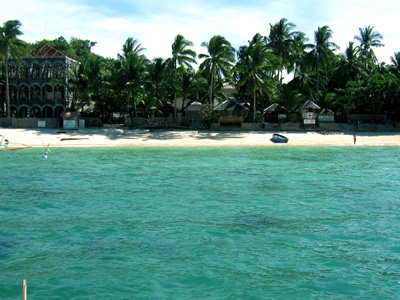
Nueva Valencia, Guimaras – An Italian couple on a two-month holiday in the Philippines chose to include this paradise in their itinerary and stayed at the Raymen Beach Resort in December 2006, unperturbed by news about the oil spill that brought the island province to world attention in August of the same year.
“We are just here to see good beaches,” said the Boldo couple, who are just among the hundreds of foreign guests who kept coming to Guimaras even in the aftermath of the infamous oil spill. Guimaras has 238.3-kilometer coastline, with long stretches of white, powdery sand considered among the finest in the world.

Lucia Cachuela, managing director of the El Retiro Beach Park, noted that international visitor arrivals to Guimaras began to pick up in November. “Tourists are coming back,” Cachuela told journalists who visited the province as a part of the Guimaras Tourism Recovery Program spearheaded by the Department of Tourism.
Despite the accident and the negative publicity it generated for the province since August, data show that the number of foreign tourists, or those who spent at least a night in Guimaras, went up to 293 in November from 98 in October, 75 in September, and 237 in August – the month of the accident. In November 2005, there were only 143 foreign tourists in Guimaras.
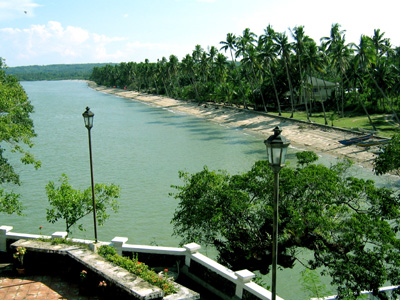
Foreign excursionists, or day-in visitors, also went up to 525 in November from 453 a year ago. It was also up from 257 in October, and 297 in September. In August, the number of foreign excursionists reached 566.
Guimaras targets to attract more foreign tourists, because they spend the highest amount while in the island. The DOT Guests Assistance Centers in the port towns of Buenavista and Jordan estimated the average daily expenditure of foreign tourist at P2,000; foreign excursionist, P1,500; local tourist, P1,500; and local excursionist, P500.
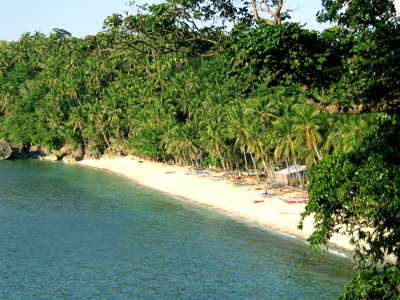
“Guimaras is very alive and kicking,” said Helen Camarista, the officer-in-charge of the Department of Tourism in Western Visayas. “Business has never been stronger.”
“Out of 24 accredited resorts, only seven have been hardest hit. So 17 resorts are okay,” Camarista, herself a resident of Guimaras, said.
Nueva Valencia Vice Mayor Juan Gaitan agreed, saying many beach resorts remain unspoiled. “We are telling people that not all areas have been affected. We encourage them to come to Guimaras,” Gaitan said.
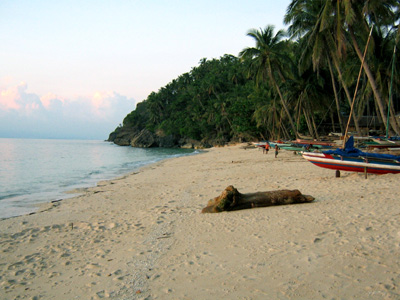
For example, Jose Garomita, president of the Guisi Community-based Heritage Tourism, said that they were able to protect the white-sand beach in Guisi, a sitio in Barangay Dolores, Nueva Valencia town from the oil slick.
Guimaras, a 60,465-hectare island the size of Singapore with five towns and 98 barangays and home to more than 140,000 residents, hogged the headlines when oil tanker MT Solar I carrying 2 million liters of bunker fuel owned by Petron Corp. sank in rough waters 10 miles off the coast of Nueva Valencia town on August 11 this year.
Scientists said about 300,000 liters of the cargo polluted 24,000 square kilometers of waters near the island paradise. The spill was later contained, and clean up operations began.
Ironically, foreign and domestic visitor arrivals to Guimaras went up by 13 percent to 13,566 in August from 11,986 a year ago. Arrivals reached 14,501 in September; 14,163 in October and 12,221 in November.
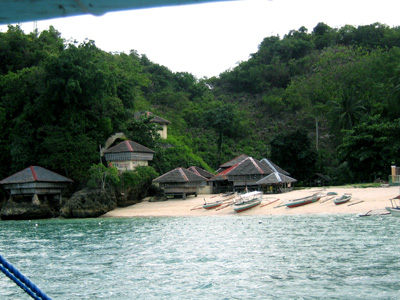
“More attention has been given to Guimaras since August. Now, there are scientists, researchers, and donors who are coming to Guimaras,” Camarista said.
Camarista noted that before the oil spill took place, there were only 4 to 5 departures of pump boats each day. Now, this has gone up to 7 to 10 departures per day, she said.
But a few resorts are still feeling the impact of the tragedy. “When news of the oil spill spread, seven resorts received booking cancellations through email,” Camarista conceded.
Peter Harper-bill, an 80-year-old British retiree who manages the Baras Resort, said bookings were less than half of what they used to be. “Normally, we were fully booked around Christmas, but now we are not,” Harper-bill said.
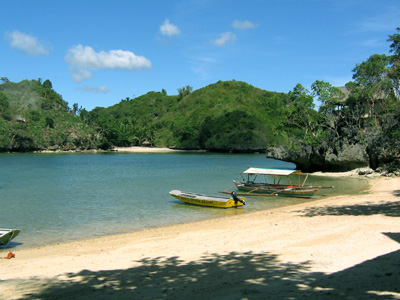
Tourism is a major industry in Guimaras. In 2005, tourist arrivals totaled 181,915 and injected P204.3 million into its local economy. Since 2003, tourist arrivals to the province have been rising 30 percent per annum.
Ruben Corpuz, the provincial economic officer, said much of Guimaras, including its spectacular coastline and rich marine biodiversity remain unexplored.
Its main attractions include Roca Encantadia, Guisi Lighthouse, Tiniguiban Islet, Isla Naburot, Lombija Wildlife Resort, Taklong-Tandog Island, Igang Marine Station, Toyo Reef, and La Paz and Pamankulan Fish Sanctuaries. Corpuz said the province is also fast rising as a destination for mountain bike races, kayaking and tours to mango plantations. Guimaras exports sweet mangoes to the United States.
Corpuz said he is optimistic about the tourism prospects in Guimaras for several reasons. These include the expansion of the ports in Jordan and Buenavista towns, the completion of the international airport by March 2007 in Sta. Barbara, Iloilo which is the gateway to Guimaras, and new investments in tourist facilities, such as the multi-million-peso investment in the Lombija Wildlife Resort and Hotel and a new convention center.
Julius Camacho, a cousin of businessman Henry Babiera of the Ortigas Group who develops the Lombija zoo, said that at more than 20 hectares, the zoo will be the largest in the country once it opens sometime in 2008. The zoo has been under development since 1998. Corpuz said about P300 million has already been invested for the development of the project, which is seen to add a new attraction to Guimaras.
“We also envision Guimaras to be a logistics hub. Guimaras Strait has the deepest berth for international vessels,” Corpuz said. “For Guimaras, there is no other way but up.”
No comments:
Post a Comment